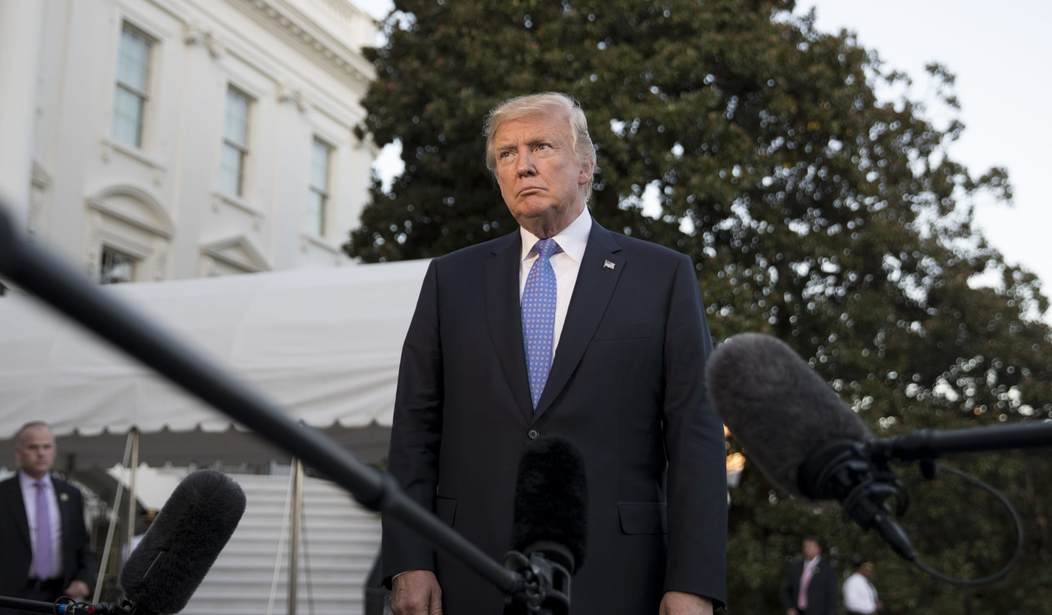President Trump might not be winning when it comes to shuffling legislation through Congress, but the same cannot be said when it comes to regulatory rollback.
On the latter matter, his actions set a historic precedent. That is likely good for the economy and may help explain the surging stock market.
“There’s a massive movement on regulations in the first few months of Trump,” says David Ranson, director of research at HCWE & Co.
How massive? As Mr. Trump might say, it’s Bigly.
In the first place, the administration isn’t producing a ton of new regulations.
“By virtually any measure, dating back through two Democratic presidents and one Republican president, the lack of regulatory output is historic,” states a recent study by the American Action Forum, a right-leaning think tank.
“Actual output was just 8 percent of the historical average,” AAF says.
The study looked at data on regulations from 1994 through 2017, specifically focusing on the period Jan. 23 to May 23 during each year.
Better still, the White House team have been busy nixing regulations.
Under the Trump administration, 64 percent of reviews by the Office of Information and Regulatory Affairs “have resulted in withdrawn rules,” which compares with withdrawal rates of 25 percent in 2009 and 55 percent in 2001, the report says. Both 2001 and 2009 were the first years of the prior two administrations.
Perhaps the biggest achievement of all is that the cost of introduced regulations was a fraction of those in past periods. This time the AAF reviewed data for the years 2005 through 2017.
“There have been $4.2 billion in regulatory costs since January 23, 2017,” the report states. “The 2005 to 2017 average is $26 billion.” Figures include the costs of independent agencies.
Or put another way, costs imposed by the administration are running at just 16 percent of the historical norm.
“Across the board, the results indicate a significant diminution in the number of regulations approved and a notable uptick in the number of withdrawn measures (previous rules from the Obama Administration no longer under consideration),” the report reads.
So what?
The fact that the administration is rolling back regulations in this way is good for the economy.
“My impression is that heavy regulation might slow growth and it certainly increases costs,” says Dr. Ivo Pezzuto, professor of global economics at ISM Business School in Paris.
Put another way, when regulation gets rolled back then business costs fall, profits rise, and growth can accelerate. At least that is the theory.
Statistical analysis shows this to be true as well.
Researchers for the National Bureau of Economic Research studied the deregulation of banking in the 1980s across different states.
“Credit supply shocks lead to an amplified business cycle, with GDP, employment, residential investment, and house prices increasing by more in early deregulation states during the expansion,” says the report titled “How do Credit Supply Shocks Affect the Real Economy?” It was published this month.
In other words, once the regulatory burden was lifted, the banks lent more and helped grow the economy.
The idea that fewer regulations work to improve growth is a notion that investors may have been betting on, propelling stocks to record levels.
What energized investors is the prospect of three changes under the current administration: corporate tax reform, infrastructure spending, and regulatory rollback, says Pezzuto.
While the first two items haven’t gained a whole lot of traction, the last has, and then some.
One thing Pezzuto notes is that not all regulations are equal, noting that the Dodd-Frank bill, which regulates banks, is both long and likely riddled with problems. It got introduced after the financial crisis of 2008-2009.
What is needed are regulations that are effective rather than heavy, he explains. Or in other words, if the rules are clear and effective, there doesn’t need to be a load of additional compliance burden on companies.
He does worry that in a few years the rollback of regulations might bite back like a boomerang in unexpected ways. “It depends on how reckless is the deregulation,” he says.
Unfortunately, whether or not any problems are being created is likely to be something learned only after the fact.









Join the conversation as a VIP Member